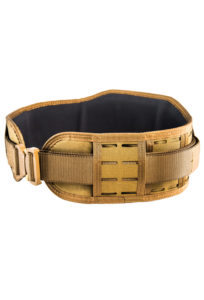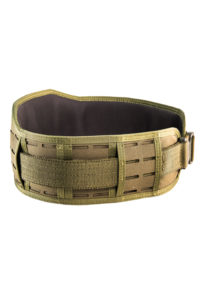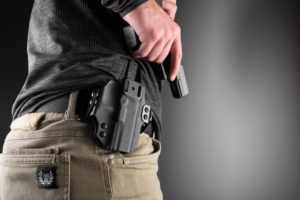If you’re new to the tactical space, you may not be familiar with the company that revolutionized the magazine pouch game, otherwise, you’ve surely heard of High Speed Gear® or seen its distinct and popular range of battle-proven tactical gear™.
HSGI® blazed the trail with the first true one-size-fits-all magazine pouch, the TACO®, which fits most rifle-caliber magazines and even non-mag items like smoke grenades or handheld radios. A version of this pouch, the X2R TACO®, a double rifle mag pouch, performed so well throughout evaluations that the Marine Corps selected as their new standard-issue mag pouch. The number one deciding factor in its selection was Marine preference.
But it’s not just HSGI’s® huge variety of different TACOs® for everything from mags to stun guns, HSGI® is also incredibly popular for its medical pouches, rigger belts, war belts and more. This 100% American-made brand also stands behind its workmanship with a lifetime warranty for all its products.
The TACO®
This unique pouch is constructed from injection-molded polymer brackets, heavy-duty nylon, and shock cord lacing to both expand and lock just about any magazine in place.
• Securely holds most rifle magazines
• Magazines deploy easily and silently on demand
• Also fits certain radios, flashbangs, smoke grenades and more
• Strip of loop fastener sewn inside for additional contact and grip
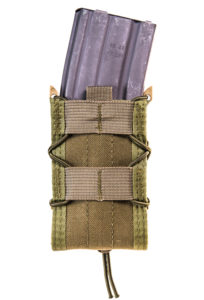
The ReFlex™ IFAK
The ReFlex™ IFAK was developed with direct input from active-duty medical personnel. The ReFlex™ is a two-piece system, med roll and carrier, that is designed to carry organized medical supplies with ambidextrous accessibility. The system, constructed primarily with heavy-duty nylon laminate, allows rapid deployment of medical supplies. This system was designed around the medical supplies included in the U.S. Army-issued IFAK. The ReFlex™ Carrier and ReFlex™ Med Roll can be purchased together or separately.
• Features HANK™ (High Abrasion-Resistant Neoprene Kevlar® composite) grab handles for long-term durability
• Can mount vertically or horizontally on belts 1.5 “-2.25”, and horizontally on MOLLE
• Intentional organization features put all supplies in easy reach
• Carry handle and shock cord loops allow the roll to be attached to a patient, or hung from an I.V. rack
• Gloves can be accessed via side slots with or without removing the roll from the carrier
• “Mini” MOLLE allows for a precise fit on belts as narrow as 1.5” or two-row MOLLE panels
• Features loop panels on med roll and carrier for label patches (Medical Cross Patch included)
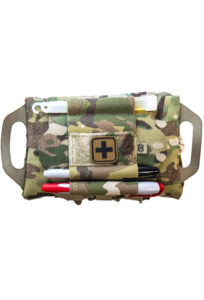
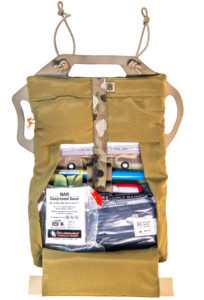
The Kydex® Tourniquet TACO®
The Kydex® Tourniquet TACO® is designed to retain windlass tourniquets on a belt, rig, or bag using the unique properties of Kydex®. Comp-Tac® uses airline-grade Kydex®, which has a smooth inside finish, is resistant to sweat and solvents, and provides a material that won’t damage the tourniquet, or the platform it’s attached to. Combining Comp-Tac’s® Kydex® manufacturing capabilities with HSGI’s® versatile TACO® design provides users the best of both worlds in manufacturing and use.
• 100% aircraft-grade Kydex® body gives a smooth finish for easy insertion and draw (.080 thickness)
• Unique shock cord design allows for the use of most windlass-style tourniquets, such as C-A-T®, SOF®TT, SOF®TT Wide, and SAM XT tourniquets, in one pouch
• Kydex® does not hold water and won’t add weight from rain, humidity or sweat
• TACO® hole pattern allows for stacking two pouches in the space of one
• Designed to match the look of the HSGI® Polymer TACOs® and Kydex® Handcuff TACO® for a seamless look on the belt
• Can be mounted to belts up to 2” or MOLLE with included two HSGI® Universal Clips
• Includes separate red medical cross decal
This product is member tested and recommended by the National Tactical Officers Association (NTOA).
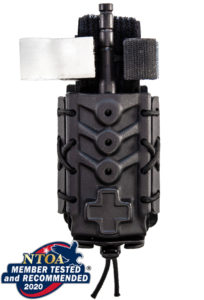
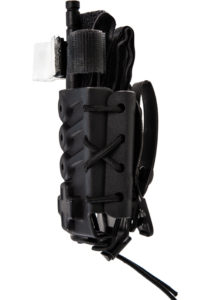
Duty Triple Pistol TACO®
Our Duty line of TACOs® functions the same as the originals, but feature sleeker fronts and hidden bungee, which is woven internally. This triple pouch will hold most pistol caliber magazines, small flashlights, pocket knives, multitools, and more.
• Mounts to both MOLLE and belts up to 2” with our new HSGI® Universal Clips
• Proprietary heavy-duty nylon laminate, shock cord, and polymer brackets provide versatility in size and adjustable retention
• Tapered, protruding brackets enable quick and easy indexing and reinsertion of items or magazines
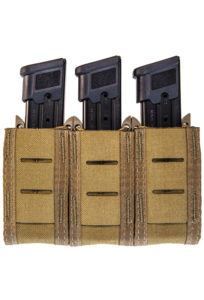
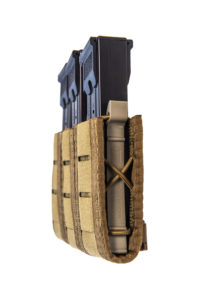
Operator Belt (COBRA® IDR 1.75”)
The Operator Belt is a low-profile shooter’s belt designed to work with both MOLLE and belt-mounted gear. This two-belt system is overbuilt, like all HSGI® gear, to outlast the competition.
• Built with two layers of military-grade Type 13 nylon webbing
• Sewn together with five rows of lock-stitched, bonded 138 nylon thread
• Proprietary construction process provides additional rigidity and stiffness
• Features an additional layer of 1.5” webbing to form industry-standard columns of MOLLE for use with MOLLE pouches and holsters
• Double-needle binding along upper and lower edges of 1.5” webbing for added durability
• Includes your choice of HSGI® Inner Belt or Micro Grip Belt Panel to mate with the Operator’s interior hook fastener
• Two-belt setup enables the easy donning and removal of a belt
• Features patented COBRA® integrated D-ring buckle with matte black finish
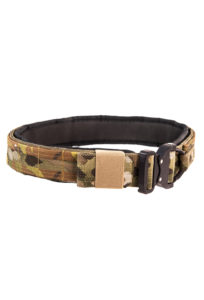
Laser Sure-Grip® Padded Belt – Slotted
This new version is of our modular padded belt system is constructed with a laser-cut, proprietary heavy-duty nylon laminate. This belt’s slotted design allows inner belts to be woven under and over the MOLLE panels, making it compatible with both MOLLE and belt-mounted pouches and holsters. Our proprietary neoprene padding adds comfort while offering excellent grip and performance. The rear features an extra row of laser-cut MOLLE for larger pouches and additional comfort.
• Neoprene padding provides a “gel-like” comfort and unsurpassed grip
• Additional row of laser-cut MOLLE on wide back panel for comfort and larger pouches
• Individual laser-cut MOLLE panels allow the innerbelt to be woven inside or outside of the MOLLE to satisfy user needs for MOLLE mounting or belt mounting holsters and other accessories
• Assembled with an HDPE stiffener for added stability
